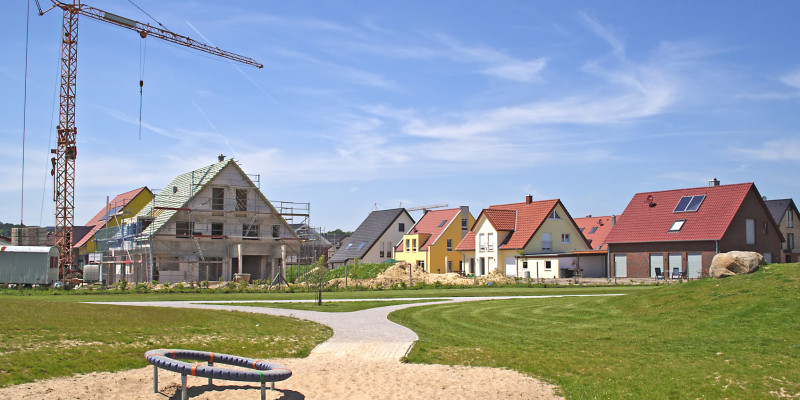Flasbarth remarks, “Even eleven years after the Federal Government adopted the national sustainability strategy we are still very far from reaching our goal to reduce land use.” One of the Federal Government’s sustainability indicators of 2002 was to limit the use of new areas for settlements and transport purposes to no more than 30 hectares a day by 2020. In the 2008-2011 survey period, however, Germany was still using 81 hectares per day – an area equal to about 113 football pitches every day – for new building purposes. The land in question is usually arable area where roads, single-family homes or shopping centres are built. This is more than just a loss of the land area available for food production today: The 120,000 hectares of land (roughly the size of Berlin and Munich together) which was rededicated in 2008-2011 could be used, for example, to provide more than 13 million people with bread for a whole year. The destruction of valuable soil also has an impact on future generations. “Restoring soil’s natural functions takes thousands of years”, says UBA’s President Flasbarth.
A system of tradable land use permits might provide a solution. Many experts in Germany believe it is an effective instrument with which to ensure that the 30-hectare goal is achieved. However, many questions remain to be solved as to how to actually design such a trading mechanism. This is why the coalition parties of the Federal Government reached a coalition agreement four years ago to experiment with trade of land use certificates in a simulation exercise, together with local authorities around the country. The local authorities receive the land use permits as certificates which are free of charge. They need these permits if they want to dedicate new areas for building outside of cities. If they do not have enough certificates they must buy more of them from other municipalities that do not plan to build in outlying areas and therefore have surplus certificates. In general the number of certificates allocated to local authorities is equal to the amount of land area used. Efficient management of certificate trading can be useful as a source of revenue which the local authorities might use to redevelop brownfields or introduce energy saving measures. UBA prepared the pilot project in great detail, and it has now entered its first phase with 15 municipalities. They are Dessau-Roßlau, Mönchengladbach, Bad Säckingen, Ostfildern, Esslingen am Neckar, Ludwigsburg, Rendsburg, Büdelsdorf, Schacht-Audorf, Osterrönfeld, Hoya, Warpe, Hassel, Meerane and the city of Spremberg.
After the start-up phase another 50 to 100 local authorities can take part in the pilot project (Planspiel Flächenhandel). Many have already expressed their interest. In addition to an expense allowance, they will also receive valuable support in determining their urban development potential and in drawing up cost-benefit analyses. The Planspiel Flächenhandel project consortium which is heading the pilot project can also provide help with applications for other grants. The permit calculator on the www.flaechenhandel.de project website provides information on how every municipality in Germany would fare in a land use trading system (in German).
 Click to enlarge
Click to enlarge
